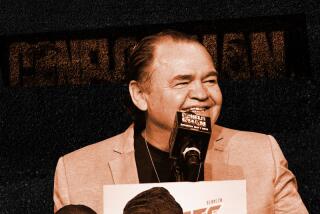Willie Pep, 84; former featherweight champion used defense as a weapon
- Share via
Former featherweight champion Willie Pep, who turned boxing into ballet and defense into a weapon in a career that spanned more than a quarter of a century, died Thursday. He was 84.
Pep, who had Alzheimer’s disease, died at West Hill Convalescent Home in Rocky Hill, Conn., according to his grandson, William P. Papaleo.
Pep is considered one of the greatest pound-for-pound fighters of all time. His greatest strength was his ability to avoid the punching power of opponents through dancing feet, blurring speed and a smooth command of the ring.
Nicknamed “Will o’ the Wisp,” Pep turned defense into an art form. To this day, whenever the value of defense is questioned in terms of scoring a fight, someone is likely to say, “Willie Pep once won a round without throwing a punch.”
Pep won a lot of rounds. And a lot of fights. His career mark is 230-11-1 with 65 knockouts, the 230 victories believed to be an all-time record. Pep won his first 63 fights, lost one and then won 72 more with one draw, giving him a mark of 135-1-1 during that stretch, unfathomable today.
Born Guglielmo Papaleo in Middletown, Conn., in September 1922 and raised in Hartford during the Depression, Pep fought from 1940 to 1966.
In an era before sanctioning bodies came banging on fighters’ doors, championship belts in hand for a fee, when only one fighter ruled a division and there were only eight weight classes, the 20-year-old Pep won the featherweight crown in 1942 by unanimous decision over Chalky Wright.
Pep broke his back and a leg in a 1947 plane crash. Told he’d be lucky to walk straight again, Pep stepped back into the ring five months later.
Pep lost his championship to Sandy Saddler in 1948 on a fourth-round knockout but took the title back from him a year later on a unanimous decision.
In 1950, Saddler reclaimed the title when Pep had to quit at the end of the seventh round because of a separated shoulder. In all, Saddler outpointed Pep in three of their four matches.
Pep’s legendary punchless round was premeditated, according to boxing historian Bert Sugar in his book, “Boxing’s Greatest Fighters.” Pep had tipped off a few sportswriters before his 1946 match against Jackie Graves that he would not throw a punch in the third round.
“It was an amazing display of defensive boxing skill,” wrote sportswriter Don Riley. Pep “made even Sugar Ray Robinson’s fluidity look like cement hardening. Never has boxing seen such perfection.”
Said one opponent, Kid Campeche: “Fighting Willie Pep is like trying to stamp out a grass fire.”
Pep lacked impressive knockout power, yet recorded 65 KOs.
“Most of his knockouts came not from a malicious blow,” Sugar said, “but from his opponents falling to the ground in utter exhaustion.”
Pep was not as successful at ducking difficulties outside the ring as he had been within the ropes.
He was a heavy gambler, according to an Associated Press story, and by his own account lost much of his earnings to six wives.
“All my wives were great housekeepers,” he would say. “After every divorce, they kept the house.”
After retiring as a fighter, Pep remained in Connecticut, working as a boxing referee, a state tax marshal and a deputy state commissioner in charge of boxing. He was part of the state’s athletic division from 1973 to 1989.
A list of survivors was incomplete Friday.
More to Read
Go beyond the scoreboard
Get the latest on L.A.'s teams in the daily Sports Report newsletter.
You may occasionally receive promotional content from the Los Angeles Times.









